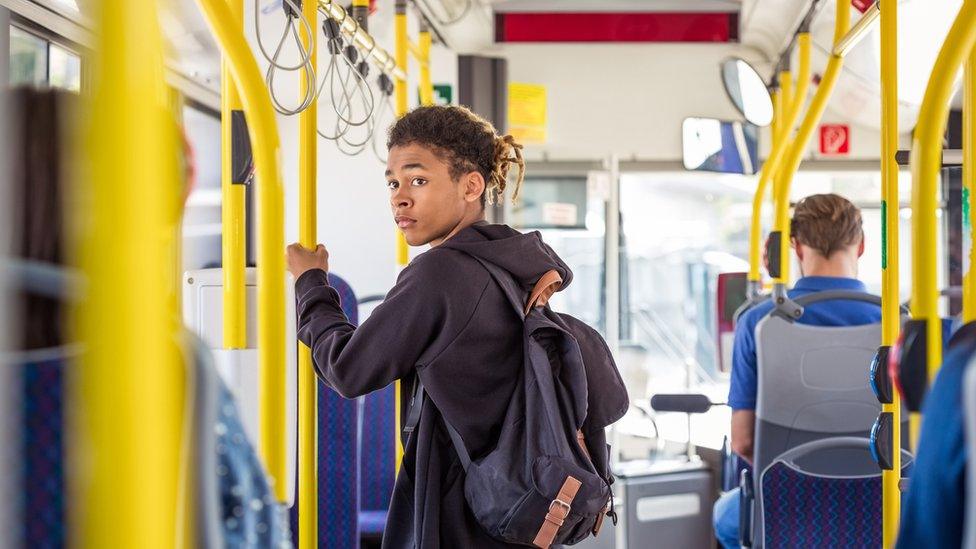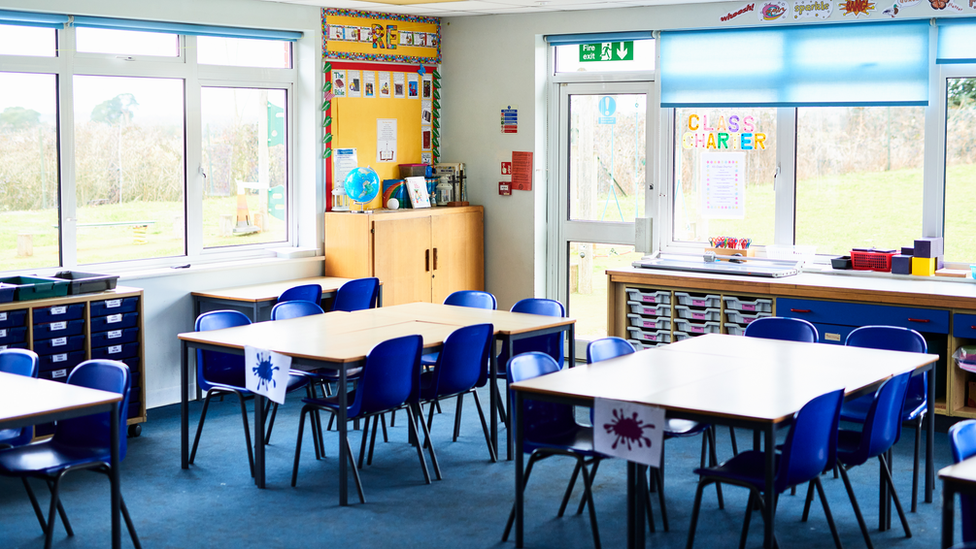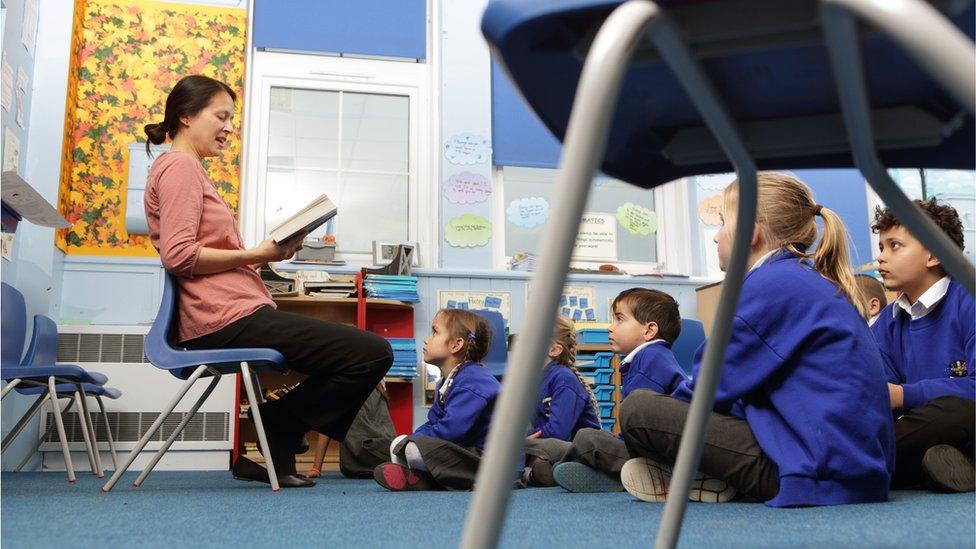School transport costs hurt attendance, say head teachers
- Published

Pupils in Wales living within three miles of a suitable school have to pay for public transportation
Making pupils pay for public transport if they live less than three miles from school hurts attendance, head teachers have told inspectors.
These costs are a common reason for absence, secondary schools heads told an Estyn review - Estyn wants the three-mile rule to be looked at again.
Absence levels are significantly higher than before the pandemic, particularly among pupils from poorer backgrounds.
The Welsh government said affordable transport was one area being looked at.
Most children at secondary school are only eligible for free transport if they live three miles or more from the nearest suitable school.
School leaders told the inspectorate, Estyn, the policy contributes to non-attendance because pupils who are not eligible either face a long walk or have to pay for a return journey, which is often beyond the means of low-income families.
They said it was a particular problem during winter months or heavy rain and storms.
One school in Swansea has worked with a transport company to offer a bus that costs £1 each way for pupils within the three-mile radius.

Welsh government figures show 16.3% of 11-15 year olds regularly missed school in 2022-23, three times higher than pre-pandemic levels
Estyn said schools could not address the situation on their own and needed support from the Welsh government.
Attendance rates for secondary schools fell substantially following the pandemic from 93.8% in 2018-19 to 87.5% in 2022-23.
Variation in attendance rates between individual schools was "a notable concern", ranging from 75% to 95%, Estyn said.
Chief inspector of education, Owen Evans, said attendance rates were "a cause for concern", especially among pupils eligible for free school meals, external.
The Welsh government said improving attendance was "a national priority" and latest data showed it was now 90.5% compared to 88.9% over the same period last year.
"A group of experts from different sectors, including from Estyn, are working with the minister to look at the reasons behind non-attendance and find solutions, including on the provision of affordable transport," a spokesman said.
"This is in addition to the discretionary powers already available to local authorities to make any arrangement they think fit to facilitate home to school transport."
What else is hurting attendance?
Estyn's report highlights other factors head teachers raised, including "a decline in parents' and carers' perception of the importance of good attendance since the pandemic".
The report calls for a national campaign to promote the importance of going to school every day.
It also recommend the government look at how plans to change the school year could help.
When it came to fining parents, school leaders said it had "a positive impact in a few cases" but did not always work for pupils who were persistently absent.
Responding to Estyn's report, a school leaders' union said "serious investment" was needed to address the problem.
"As Estyn points out, local authorities and the Welsh government have a big part to play in solving this problem - schools can't be left alone to try and fix it," said Laura Doel, from NAHT Cymru.

THE AUBERGINE CAFE: Kizzy visits Wales' first neurodivergent-led sanctuary
MYFANWY HAYCOCK: Jenni is on a mission to revive the legacy

Related topics
- Published23 February 2023

- Published27 October 2022

- Published3 May 2022
